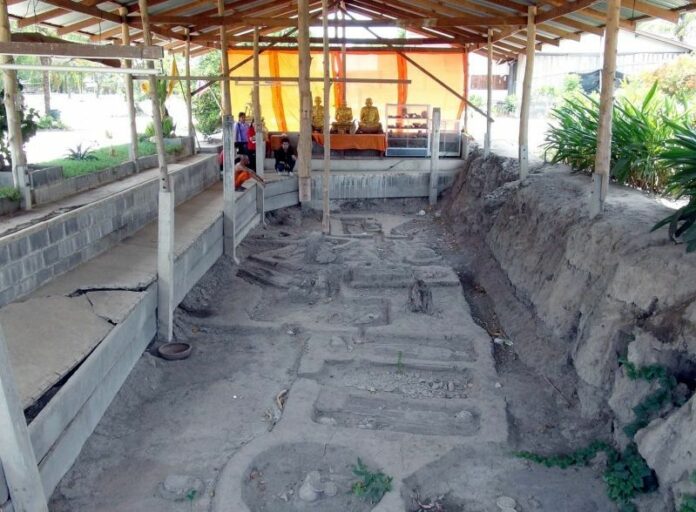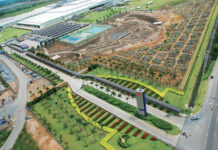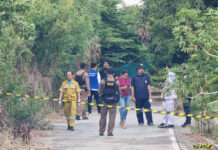
(13 May) Our correspondent received reports that a prehistoric cemetery in Nongtakien Temple, Pitsanulok, which was built thousands of years ago is starting to collapse, especially during the start of this year′s rainy season.
The cemetery becomes flooded and the water may
have damaged the prehistoric human remains buried there. Locals request the
immediate aid of agencies involved.
Reporters arrived at the scene to investigate,
finding a 5 by 10 meter hole, 2 meters deep, containing prehistoric human
remains that were uncovered in July 2009. The temple built a roof for the
area, but since 4 years had passed, the roof has become worn out and the
remains were getting wet every time it rained.
Pra (Monk) Mongkol Mahawiro, stationed at the temple, said
that in 2009, the locals uncovered a large collection of human bones on the
temple grounds.
Later, the Department of Fine
Arts investigated and reached the conclusion that the bones were at least
1500-2000 years old, similar to the ones in Banbuengyah, Sukhothai. The locals
helped build a roof to keep out the rain water.
He added that in the past 4 years, the roof
has undergone some wear and tear and the temple did not have the budget to fix
the roof. During the rainy season in 2012, the cemetary was flooded under 1
meter of water and fears arose that the skeletons would be damaged. The rainy
season this year would no doubt cause more floods and may damage the artifact
even further.
The prehistoric cemetery houses prehistoric skeletons , stone axesand pottery.
The Fine Arts Department examined and identified the prehistoric
archaeological resources, composing of pottery, stone axes, stone beads, medicine grinding stone, stone bracelet, stone sickle for spinning yarn and speculated
that
the area was originally used for planting cotton and making textile 1500-2000
years ago.
Ms.Rattiya Chaiwong, The arts expert archaeologists of Sukhothai said the
first time the Fine Arts Department investigated the area was a survey for
ancient artifacts, such as stone axes and stone beads.
However, as time went by, the temple staff dug into the
ground and found 1 ancient skeleton.
They expanded the search without
the help of the Fine Arts Department and did not inform the department until
after the excavation was done.
She also stated that the Director at the time contacted the
temple and pushed for a report to be made to coordinate with the Nongtakien
DOA to inquire whether there was a budget for excavation and develop the area
into a learning facility for the community, which should be easier than
waiting for a budget from the Fine Arts Department.
However, she said,
the DOA did not respond.
Mr.Peerapon Pisanupong, director of the Fine Arts Department in Sukhothai, said that the temple has not contacted the Fine
Arts Department to survey the area again. He has heard that locals want to
make an area into an open museum, but has no budget.
The area is considered an archaeological resource. There are 2 types of archaeological resources: registered and unregistered. Nongtakien temple is
not registered since the excavation was done by local citizens, which makes
the area very hard to regulate, Mr. Peerapon
said.
Once the skeletons are exposed to the atmosphere, various
chemical reactions may occur which can damage them.
He noted that the problem is that
these skeletons would provide so much information had it been left in the
ground and the officials can investigate any other artifacts in the area to
determine the era the skeletons belonged to.
Nonetheless, if a study
is done on the skeletons now, we can determine the age and the cause of death
of the skeleton, Mr. Peerapon
said.
The Fine Arts Department says it will send in more workers to survey the area since the skeletons are considered
archaeological evidence.











































